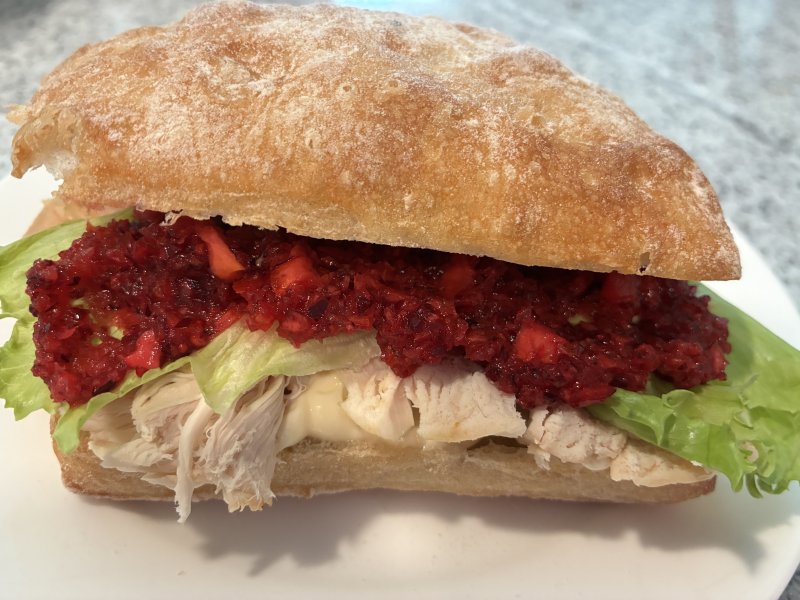Give thanks for holiday leftovers – and store them properly
With the abundance of food served yesterday, I started thinking about the history of leftovers. When food was scarce, our ancestors only prepared enough for the family to consume at a single seating. They soon discovered the remains of the deer or boar they’d hunted would last for a future meal if it was tucked away in the back of a cold, dark cave.
Ancient Romans and Greeks discovered ice from the mountains could be hauled down, wrapped in straw or buried in cellars, and used to delay food spoilage. Root vegetables, certain fruits and smoked meats could be stored for months. As technology evolved, canned and preserved foods such as jams, jellies, vegetables and sauces found their way to the larder. Many early cookbooks included instructions for pickling the remains of a meal.
The earliest in-home refrigeration was in the form of iceboxes, which became available in the late 1800s. These were wooden cabinets lined with tin and insulated with straw or sawdust. They had a top compartment that held large blocks of ice that were delivered door-to-door, just like milk. As the ice melted, cool air circulated, keeping food fresh.
Chemical refrigerants were introduced by the early 1900s, but some of their vapors proved to be dangerous. The combination of electricity reaching homes and the development of freon helped most families add a modern refrigerator to their kitchen in the 1920s and 1930s. This timing proved fortuitous, as people struggled during the Great Depression, and leftovers meant another meal. A headline in Good Housekeeping magazine from the time advised, “Leftovers Shouldn’t Be Left Over.”
Once we had the convenience of refrigerators, innovators discovered a need for storage containers. In 1908, Corning Glass Company invented nonex, a heat-resistant glass used for railroad lanterns. The wife of a Corning scientist came up with the idea of using the same material for baking dishes. The name of the new kitchen glassware line was Pyrex, a combination of “pie” and “nonex,” and options included pie pans, loaf pans, and square and rectangular baking dishes.
By 1925, lidded Pyrex refrigerator storage boxes became available, and in 1940, Earl S. Tupper introduced plastic Tupperware containers. These were sold at parties where the host would demonstrate the distinctive sealing “burp” that promised a longer life for leftovers. Within the next 20 years, we found the convenience of Saran Wrap and Ziploc storage bags. The last of these have begun to fall out of favor, replaced by environmentally preferable beeswax wraps.
Leftovers can be treated in two separate ways. The first is to consume a replica of the festive meal with the remains of the original, while the other is to transform the ingredients into an entirely new dish. For most Thanksgiving Day feasts, cooks deliberately select a bird larger than necessary and peel an abundance of potatoes to ensure leftovers will be available for a second feast. Or, for those who don’t want to revisit the entire meal, there’s my favorite – the turkey sandwich (see photo).
For those of you looking to repurpose what you have on hand after the big day, I’ve included recipes for turkey soup and a turkey potpie. There are countless recipes on the internet for layered casseroles that include turkey, potatoes, stuffing and cranberry sauce, but I find the flavors too confusing. Bring on that sandwich!
Turkey Soup
1 T butter
6 C chicken stock
2/3 C orzo
Combine olive oil and butter in a soup pot over low heat. Sauté shallots, carrots, celery, garlic and thyme leaves until softened, about 5 minutes. Add chicken stock, cooked turkey and bay leaves, and bring to a boil. Add orzo, reduce heat to medium and cook until tender, about 10 minutes. Season to taste with salt and pepper. Sprinkle with chopped parsley to serve. Yield: 6 servings.
Turkey Pot Pie
Preheat oven to 400°F. Coat the inside of a 9-inch pie plate with nonstick cooking spray; set aside. In a medium saucepan, melt butter over medium-low heat. Sauté onion until tender, about 5 minutes. Stir in flour, poultry seasoning and thyme leaves; cook for 2 minutes. Whisk in broth and half and half, stirring to combine. Bring to a boil, then simmer 1 minute. Remove from heat and whisk in mashed potatoes; stir until smooth. Add turkey and vegetables, stirring to combine. Season to taste with salt and pepper. Pour mixture into prepared pan, cover with pie crust, seal and crimp edges, and cut a couple of slits to vent steam. Whisk together egg and water; brush evenly over the crust. Bake until it’s lightly browned and filling is bubbly, about 35 to 40 minutes.
Cool 10 minutes before serving. Yield: 6 servings.




















































